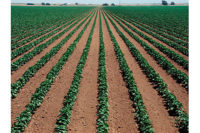As we are all aware, the economy is still not back to 2008 levels. The US Census Bureau’s 2012 Statistical Abstract shows that a majority of households are now two-income families with a family size of 2.55 people. Baby boomers, early retirees, empty-nesters, a younger generation marrying later and more divorces have created a necessity of convenience and smaller portions in packaging. Fragmented meal preparation and snacking are just part of the new life style. Consumers today are more informed, and pricing is not the only factor they consider. Packaging, and how it will make their life easier, is also critical. Considerations include:
The European influence
Consumers in Europe tend to be three to five years ahead of us in the USA, in large part due to their buying habits. Typically, their refrigerators are much smaller than those found here and they must shop five to seven times a week to keep their families fed. Stores experience a daily “five o’clock rush hour” as European consumers stop on their way home to buy ingredients for dinner that evening. Here in the USA we are seeing more than a fair share of two-income families following this European trend. Despite the frequent shopping, freshness is a concern second only to the price of the products. The UK currently has a campaign to inform consumers how the packaging of the food actually creates maximum freshness, including instructions on the package itself and tips for proper storage using the packaging as an aide in keeping the food fresh. This campaign, Fresher for Longer, hopes to see reduced food waste while educating consumers about the importance of the packaging, i.e. why it is packaged the way it is.
Sustainability
Certainly this is a buzz word everywhere, and packaging is no exception. Creating eco-friendly packaging that still protects the goods, retains freshness, and is transportable and shelf ready can be challenging. Packaging made from recycled products, or itself recyclable, is a sought-after goal for both consumers and industry leaders. The familiar recycle label on a product is a plus in this conscientious world.
QR codes
Originally designed for the automotive market, the QR code is showing up on more and more consumer packaged goods. Consumers with smart phones can scan the code and find out more information about the product. This can include such things as additional nutritional information, recipe suggestions, traceability of the product, and even factory tours. Adding this type of smart code to a package indicates the manufacturer’s commitment to the next generation of technology and transparency.
Reseal-ability
Despite being invented in the 60’s, zipper sealed bags were not used in packaging until the late 80’s/early 90’s. As with all product life cycles, innovative features eventually become the standard. Reseal-ability has become almost a prerequisite in any packaging, including private label products. This type of packaging continues to tweak itself and includes stand-up pouches for many products. While the slider enhances shelf life and reduces clean-up/storage after the meal, inevitably something better will replace it. Some companies have removed the zipper and replaced it with a resealable tape. This approach reduces their cost and manufacturing waste. An innovative, new type of resealable top, rolled out in late 2012, involves a Velcro closure being used by a national family-owned rice company.
Repackaging of existing products
Bundling products, creating utility and convenience for consumers, has become a popular innovation in packaging attempts to meet the increasing needs of the marketplace. It has been said that 40-50 percent of all product innovations for consumer packaged goods are driven by packaging. Examples include yogurt with granola packaged separately on top, pre-packaged lunches and fast food packaging that holds the sauces on the side of the chicken nuggets. Combining multiple items in their own packaging, but all bundled in one package, enables one-stop shopping for the consumer.
Reduced cooking time
Oven-able products and cook-in-the-package microwave products have been around for quite a while now with upwards of 90% of all households using them. Creations such as crisping materials/pockets for microwaves and oven-able film for traditional baking of products have led to a higher quality product for the consumer while at the same time creating a need for packaging to accommodate these new cooking techniques. Creating these cooking items can be challenging, and teaching the consumer that “metals” can be used in a microwave and “plastics” can be used in an oven are obstacles. Nevertheless, busy consumers benefit from the easy clean-up and shorter cooking time.
Extended shelf life/improved freshness & quality
Innovative packaging techniques help extend shelf life and improve freshness and quality. Leak-proof packaging, tamper-proof packaging and food safety will always be ongoing objectives. The application of breathable films and gas flush packaging will continue to allow us to extend shelf life and improve product quality and freshness at a relatively low cost. Laser-scored packaging that allows for a package to fracture at a certain temperature gives the effect of a product being cooked in steam.
Novelty packaging and design
While typical packaging takes into account the shelf space it will occupy not only at the store but in the consumer’s refrigerator or pantry, there is a trend with younger consumers to purchase what looks like fun. Examples of this type of packaging include containers shaped in relation to the product that is inside (i.e. a milk jug shaped like a cow), packaging that can be used with the product (i.e. the lid becomes the spoon), packaging that can be recycled for use at home (i.e. storage container or toy) and much more. This category also includes retro-packaging. Though the novelty of the packaging may be the primary reason for the purchase, the consumer nonetheless expects a high quality product.





Report Abusive Comment